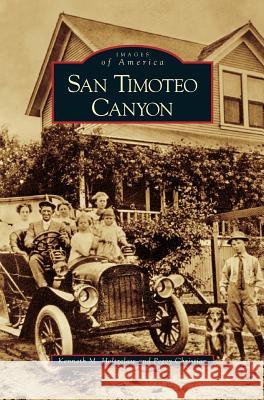San Timoteo Canyon » książka
San Timoteo Canyon
ISBN-13: 9781531629014 / Angielski / Twarda / 2007 / 130 str.
San Timoteo Canyon, known locally as "the canyon," has always been a major thoroughfare for the area. Once a favorite passage for desert tribes traveling to the sea to trade their wares, it was also used as the main corridor for wagon teams coming from the San Gabriel Mission en route to the Salton Sea to harvest precious salt. Stagecoach lines later traversed the canyon from Los Angeles to Arizona, requiring the establishment of stagecoach stops in the San Timoteo Canyon and elsewhere. Wyatt Earp was one of the most famous stagecoach drivers to pass through the canyon. Later the "Iron Horse" became the primary method of travel, and the stage lines were abandoned, although train transportation remained strong. Today the Riverside Land Conservancy and the California Department of Parks and Recreation are working together to create a 10,000-acre state park to protect and preserve this scenic canyon.
San Timoteo Canyon, known locally as "the canyon," has always been a major thoroughfare for the area. Once a favorite passage for desert tribes traveling to the sea to trade their wares, it was also used as the main corridor for wagon teams coming from the San Gabriel Mission en route to the Salton Sea to harvest precious salt. Stagecoach lines later traversed the canyon from Los Angeles to Arizona, requiring the establishment of stagecoach stops in the San Timoteo Canyon and elsewhere. Wyatt Earp was one of the most famous stagecoach drivers to pass through the canyon. Later the "Iron Horse" became the primary method of travel, and the stage lines were abandoned, although train transportation remained strong. Today the Riverside Land Conservancy and the California Department of Parks and Recreation are working together to create a 10,000-acre state park to protect and preserve this scenic canyon.











